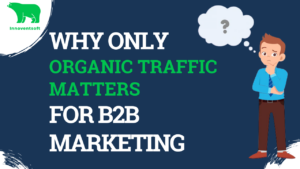Like any other company improving its product by constant tinkering, Google rolls out updates to its search engine algorithm to improve its quality. There are core updates (major) and monthly updates, and they enhance how easily users find what they’re looking for in the SERPs (Search Engine Result Pages).
Since the updates change how the algorithm ranks websites, they affect most companies’ website traffic and other crucial metrics like clicks and impressions.
Google rolled out its latest core update in May 2022, and the recent monthly update was the August 2022 helpful content update. Let’s see how they impact the content planning and execution process for product marketers.
We’ll look at:
Google May 2022 broad core update
Google revealed little about the core update. There was no mention of what type of websites would get affected or to what extent the impact would be.
Announcing the rollout, Google said in its blog, “The changes are about improving how our systems assess content overall.” In other words, the update changes how the algorithm assesses and ranks indexed webpages to improve the quality of the search engine.

The announcement followed with a message to webmasters. “We know those with sites that experience drops will be looking for a fix, and we want to ensure they don’t try to fix the wrong things. Moreover, there might not be anything to fix at all.”
As usual, there was high volatility in website rankings and visibility following the update. There were winners (who gained better rankings) and losers (who lost rankings for some of their keywords).
But, how did it affect product marketers?
The impact on product marketers
Many B2B organizations saw a massive decline in keyword rankings for some of their crucial top-of-the-funnel content following the update. The reason for the decline in the ranking was that those sites focused on page ranks through content rather than delivering value for readers.
May 2022 update negatively affected websites with low-quality content that was,
- keyword stuffed,
- not organized, and
- not written for a specific target audience.
August 2022 helpful content update
Google named the August 2022 update “helpful content update” and the focus is on improving the algorithm to reward quality content. While announcing the update, Google gave two pieces of advice to content creators:
- Focus on people-first content.
- Avoid creating content for search engines first.
The sole aim of the content update is to rank content that provides a satisfying experience for users and curb the visibility of websites that don’t. So the aim of your content should be to make the audience feel like they have learned something or got what they were looking for.
What makes the helpful content update different from the core update is that it doesn’t stop with a one-time rollout. Dani Sullivan, Google’s Search Liaison, says that “incremental improvements might happen as part of ordinary operation.” This means there will be more of the same tweaks as part of their wider initiative to better rank websites with original, quality content.
The update started rolling out on August 25 and was completed on September 9
The impact on product marketers
The update doesn’t seem to have a significant impact on search results, and the effects seem to be minimal as of now. However, product marketers would want to heed the update for two reasons:
- This is a continuing effort: Dani Sullivan says the helpful content ranking signal may get stronger with future core algorithm updates.
- Google makes it clear: “Any content—not just unhelpful content—on sites determined to have relatively high amounts of unhelpful content overall is less likely to perform well in Search, assuming there is other content elsewhere from the web that’s better to display.”
Dani Sullivan ensures that those who publish good content on their websites shouldn’t be worried about the update.
So how do you know if your content is helpful and meets the quality standards?
Google lists out a bunch of questions that content creators can ask, before creating and publishing content on their websites.
3 key takeaways for product marketers
Personally, it feels like cheating if I have to create content that would rank better on Google SERPs, but will not provide any value to the readers. I believe it will definitely bite us like karma. Because, if readers feel we have robbed 5 precious minutes of their lives, they will instantly lose trust in our brand.
Google is trying hard to minimize such encounters and provide a positive user experience to its users by better ranking trustworthy, valuable, and engaging content. And that’s the goal of the algorithm updates
So, what are the key takeaways for product marketers from the recent updates?
1. Stop chasing the algorithm
If you plan on chasing the algorithm and staying ahead in the game, let me break it to you: it’s a race you’re not going to win. Why?
Google makes continuous updates to its search engine algorithm, but they release the details of only a few to the public. There are countless minor updates happening that webmasters wouldn’t even know about.
So what can you do? I’d suggest what John Mueller, Google’s Search Advocate, said in a tweet back in 2017: “Act naturally, like you don’t notice the algorithm watching.” (That lifts so much pressure from your shoulder, doesn’t it?)
What he meant is that you can focus on making your content better and improving the overall user experience of your website. Create quality content, ensure SEO best practices, and eventually, Google will reward you.
2. Stay clear of GPT algorithms to create content
I know there’s a lot going on being a product marketer, and it seems okay to use GPT algorithms (AI-trained models) to auto-generate content. But staying clear of AI-writing tools will be the better idea. Because Google made it clear as a bell (while rolling out the helpful content update): they need content written “by” the people.
Also, a few months back, John Mueller was reported as saying, “It (auto-generated content) is still against the Webmaster Guidelines. So we would consider that to be spam.”

Although there are no specific actions Google takes to distinguish AI-written content automatically, John says, “If we see that something is automatically generated, then the webspam team can definitely take action on that.” This means that Google will penalize your website, and your rankings will suffer if you publish more automated content for the sake of publishing content.
So, stop relying on algorithms such as Leonardo-da-Vinci and Curie of GPT-3 or GPT-2 to create content for you.
3. Create content that matters
To align with Google’s long-term plans and stay visible in the SERPs, you will need good content that resonates with your prospects. The best way to create quality, engaging content is to understand your customer’s pain points at every stage in the sales cycle. Once you identify them, you can create content addressing those problems and suggest solutions (your product, ideally) to solve them.
Sometimes, PMMs overlook this crucial step in the content creation process and simply ask writers to cover topics their competitors are covering. Because it can take a great deal of time to come up with relevant topics and detailed outlines. But, using tools like Innoventsoft’s Content Marketing Platform can make creating impactful content easy, repeatable, and scalable for you.
A scientific, data-driven approach to content creation
Innoventsoft started with the goal to help brands create content that matters, and help them save millions of dollars spent on paid ads. Our Content Marketing Platform helps you do that using AI/ML predictions and continuous content impact monitoring on key marketing KPIs.
The way how it works is simple: No matter how complex your domain is, the AI-powered platform will quickly understand it. It will then provide you with detailed content outlines and optimized templates relevant to your audience, depending on their buyer journey (attention, interest, desire, and action).

Once you publish the content, you can track its impact on key product marketing metrics, such as,
- brand awareness,
- audience engagement,
- form fills, and
- qualified leads, using the platform.
The Platform will help you produce impactful content faster and more frequently, cutting countless hours spent on identifying the right content and optimizing. In fact, it can be your centralized tool to create great pieces of content and monitor their impact.
Many organizations have seen significant results (including a 4x growth in quality leads for a cloud computing unicorn) using the platform. And you can opt for a free trial and see how the Platform can change your content creation process for good.
Remember, the internet is already filled with low-quality content that are worthless. So ask yourself, “What problem am I going to solve with this piece of content?” before you put your fingers on the keyboard.
With that being said, may the force be with you to create good content, drive traffic, and generate more revenue.





